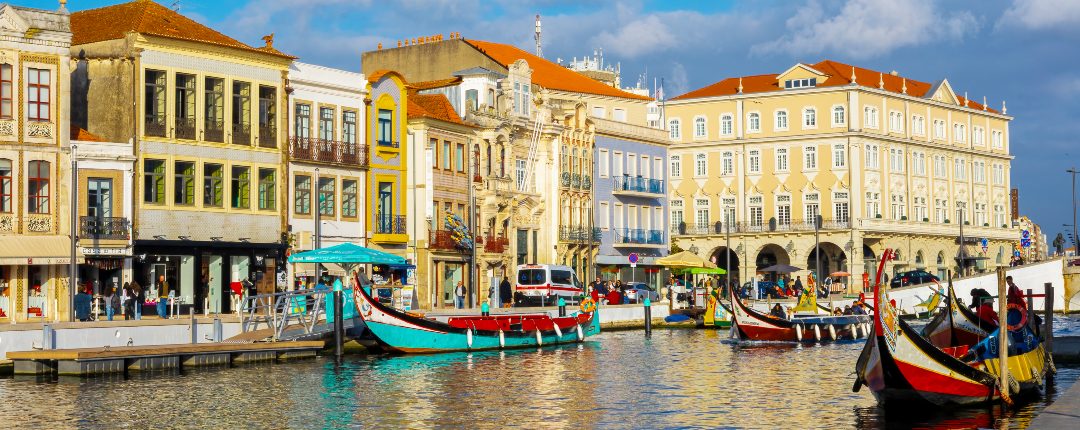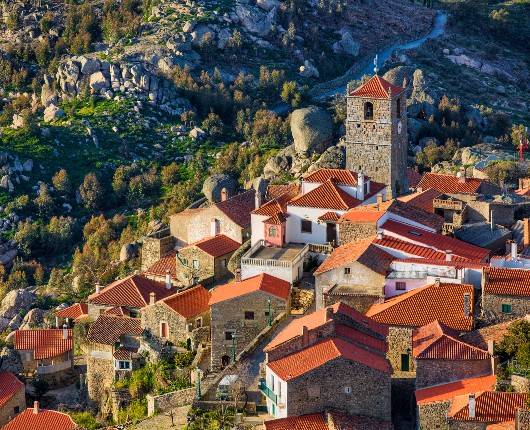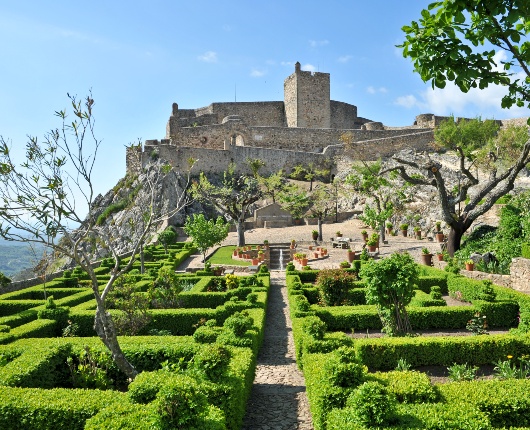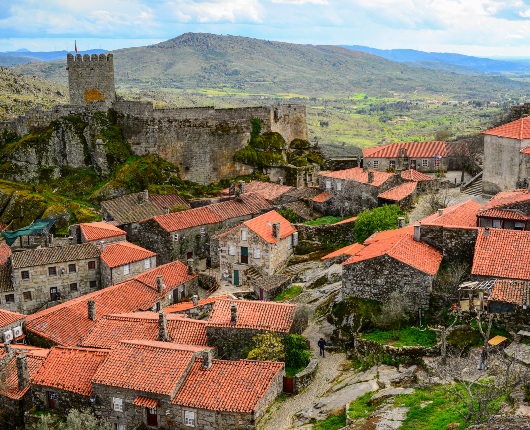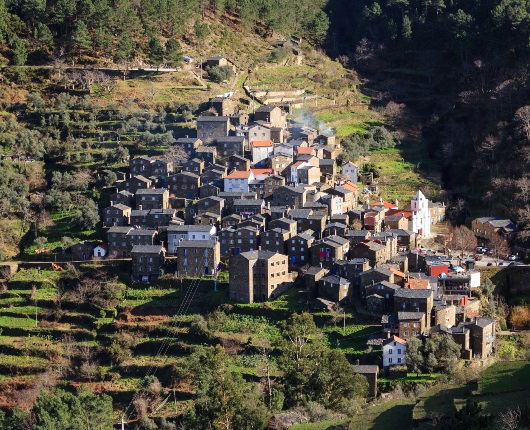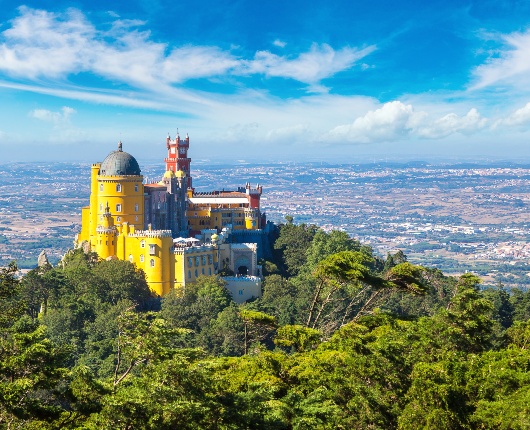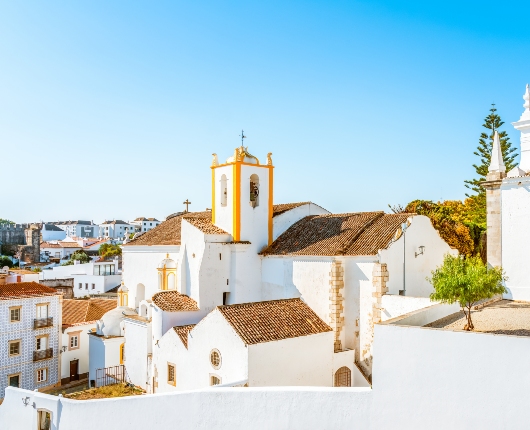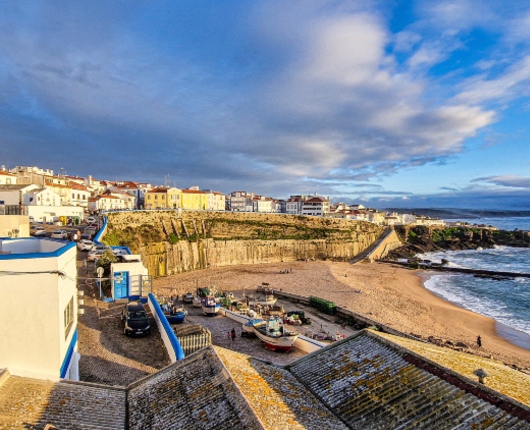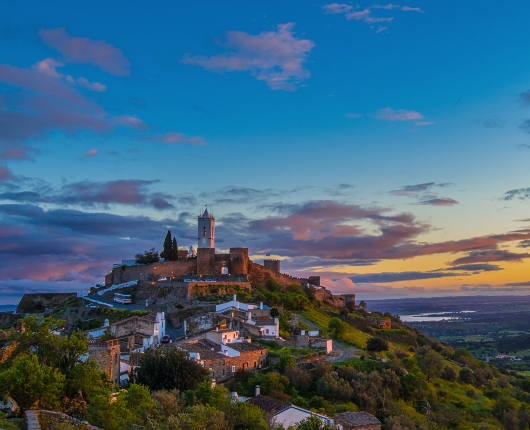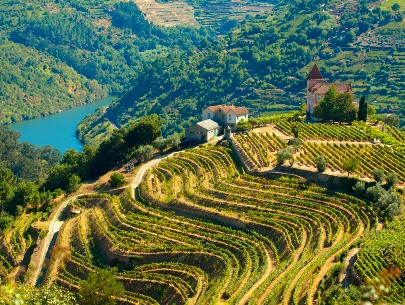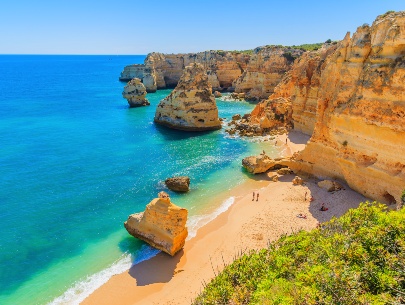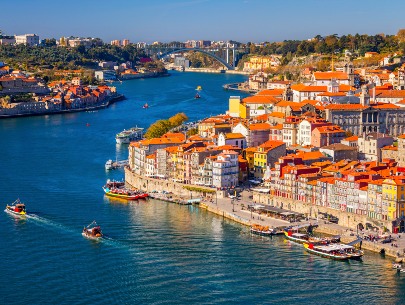Ericeira
The seaside community of Ericeira is often referred to as Europe’s surfing capital. It’s also one of only two European places among the World Surfing Reserves thanks to the exceptional conditions. The huge waves that roll in have made it the go-to destination for surfers with surf schools to help those of all experience levels to get up on their boards and enjoy the ride. Just watching the experienced surfers from the Ribeira d’Ilhas viewpoint makes for a great time. Hiking the dramatic coastline and sunset-watching from the cliffs is popular too. The town itself hosts enticing cobbled streets with traditional whitewashed homes, outstanding restaurants, surf-inspired bars, traditional Portuguese cafes, and hostels attracting surfers of all ages from across the globe.
Monsaraz
The tiny medieval hilltop village of Monsaraz near the Spanish border is located in the eastern Alentejo region, the “land of good food and good wine,” stretching beyond the Tagus River into the Algarve Hills. Made of schist and lime, it seems as if it’s suspended in time. The area has been inhabited for thousands of years and while the Romans built sturdy fortifications here, the forbidding castle standing today was constructed in the 14th century. It’s open to the public for exploring with no admission charge. From here you can also enjoy a beautiful view of Europe’s largest artificial lake, Alqueva Dam. This area is also renowned for its wine which can be sampled in the many bars and eateries.
Comporta
Sometimes called Portugal’s best “secret beach town,” Comporta offers miles and miles of pristine beaches and unspoiled nature. Even better? It’s just an hour from Lisbon, perfect for a day trip. It’s best for a relaxed retreat with time at the beach, most notably at Praia da Comporta, a favorite. During the summer it’s quite lively, offering surf schools, cafes, and restaurants. Horseback riding is possible, including the chance to ride across the soft, sandy beach at water’s edge. At the Sado Estuary Natural Reserve, one can watch for dolphins and the over 250 bird species, including a huge flock of pink flamingos that inhabit the area. Boat cruises are one of the best ways to explore the reserve.
Porto Covo
The small, charming village of Porto Covo lies on the Costa Vicentina in the port city of Sines, providing a slice of stunning beauty in the Alentejo region. It’s known for its beaches tucked into serene coves, often named among the most beautiful in Portugal. They offer fine sand and opportunities for watersports like windsurfing. A scenic walk on the coast along the cliffs is a must. You’ll have a view of the small, idyllic beaches like Praia do Banho and Praia Pequena on one side, while the fishing port of Porto Covo Bay with colorful boats is on the other. The path incorporates a historic pilgrimage route, revealing a lighthouse that now stands on the ruins of a Franciscan monastery.





